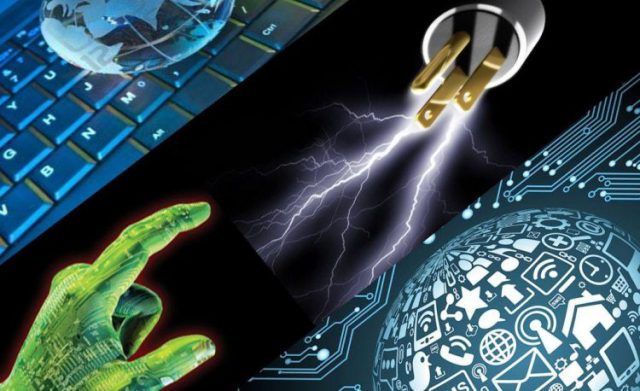Emerging Technology is a term commonly used to describe a new technology, but can also refer to the continued development of existing technology; It may have a slightly different meaning when used in various fields such as media, business, science, or education.
Importance Of Emerging Technologies “Now & Today”
Thanks to emerging technologies, ‘intelligent enterprises’ are re-establishing and strengthening the way they do business. Through the use of these tools, they are advancing their organizations in ways that not only meet their business goals, but also benefit citizens, communities and society.
Emerging Technologies in Electrical & Electronics Engineering
- Artificial Intelligence in Electrical Engineering
- Application of Internet of Things in Electrical Engineering
- Neuromorphic Computing
- Improvement in Dynamical Systems
- Smart Grid
- High Efficiency Photovoltaic Cells
- Green Energy Electrical Power Converter
- Wireless Power Transfer
- Use of Virtual Reality & Augmented Reality in Electrical Engineering
- Wireless/Smart Wearable Technology
- Future of Smartphone Design
- Nano electronics
- Electric Vehicles
- 5th Generation wireless Technology
- Space based Solar Power

Neuromorphic Computing
Neuromorphic engineering, also known as neuromorphic computing, is a concept developed by Carver Mead, in the late 1980s, describing the use of very-large-scale integration (VLSI) systems containing electronic analog circuits to mimic neuro-biological architectures
.
A neuromorphic computer is a machine comprising many simple processors / memory structures (e.g. neurons and synapses) communicating using simple messages (e.g. spikes). Neuromorphic computing systems excel at computing complex dynamics using a small set of computational primitives (neurons, synapses, spikes)

Improvement in Dynamical Systems
A dynamical system is a system whose state evolves with time over a state space according to a fixed rule. In mathematical form it is a system in which a function describes the time dependence of a point in a geometrical space.
.
Examples include the mathematical models that describe the swinging of a clock pendulum, the flow of water in a pipe, and the number of fish each springtime in a lake. Scientists increasingly view Earth as a dynamic system – a combination of interrelated, interdependent or interacting parts forming a collective whole or entity. On a macro level, the Earth system maintains its existence and functions as a whole through the interactions of its parts, called components.

Smart Grid
As energy systems become more complex and energy sources become more diverse, smart grids are growing in importance worldwide.
Smart grids integrate innovative electrical technology at multiple levels to improve flow control, detect malfunctions, and automate service delivery.With end-to-end communication between power plants, distribution sites, and the end user’s electrical point-of-presence, it becomes possible to raise efficiency and reduce costs.

High Efficiency Photovoltaic Cells
One of the enduring challenges of modern electrical engineering is to find an implementation of photovoltaic technology that is efficient, effective under varying operating conditions and highly resistant to damage while not being cost prohibitive.
Different engineering approaches have been used to raise collection and distribution efficiency, through perovskite-based cells, which have recently captured the most attention at major research facilities.

Green Energy Electrical Power Converter
Once you collect energy, converting it for use in the electrical system is an essential next step.
A new power converter developer in the Department of Electrical Engineering at the University of Arkansas will now make it easier for users of renewable energy to shunt excess energy into the power grid. This has the potential to make rooftop solar initiatives much easier and to further incentivize homeowners to pursue energy efficient technology.

Wireless Power Transfer
Wireless Power Transfer (WPT) makes it possible to supply power through an air gap, without the need for current-carrying wires.
WPT can provide power from an AC source to compatible batteries or devices without physical connectors or wires. It is extremely useful to power electrical devices where interconnecting wires are inconvenient, hazardous, or are not possible.

Use of Virtual Reality & Augmented Reality in Electrical Engineering
Virtual reality draws on multiple disciplines, but in terms of providing a sensory experience that maps effectively to ‘real-life,’ electrical engineering is crucial.
Augmented reality (AR) is a technology that superimposes a computer-generated image on a user’s view of the real world, via an electronic device such as a smartphone or tablet.New applications of AR have the potential to revolutionize how electrical systems are managed and maintained, by superimposing current data and virtual objects onto a cabinet, machine or plant, enabling instant issue diagnosis and contactless maintenance.

Wireless/ Smart Wearable Technology
The idea of the ‘Personal Area Network’ has been around in computing science for a long time, but it’s only now becoming a practical reality. Devices now can operate on a smaller scale than
ever and interface seamlessly with the wider environment.Wearable devices have been developed to authenticate access to vehicles and machinery, improve reading comprehension while engaged in exercise, and provide communication information without the use of a phone. Wearables include devices like smart glasses, such as Google Glass, and smart jewelry, like Ringly. Similarly gadgets like Jawbone, FitBit & GoQii are also gaining lot of traction.

Future of Smartphone Design
A flexible display is an electronic visual display which is interest from numerous consumer electronics manufacturers to apply this display technology
in e-readers, mobile phones and other consumer electronics.

Nanoelectronics
Nanotechnology is said to have such pervasive consequences that the 21st century is already proclaimed to become the ‘nano-century’. Scientists and engineers across the globe are currently exploring the new characteristics that materials acquire at the nanoscale.
Whereas Nanotechnology has far reaching application in Medical Sciences, Food, Space Research and a number of other fields, it can also be a trend setter in Electronics. It may hold solution to increasing the capabilities of electronics devices while reducing their weight and power consumption.

Electric Vehicles
An electric vehicle is a vehicle that uses one or more electric motors or traction motors for propulsion.
An electric vehicle may be powered through acollector system by electricity from off-vehicle sources, or may be self-contained with a battery, solar panels or an electric generator to convert fuel to electricity.

5th Generation wireless Technology
5G wireless technology is meant to deliver higher multi-Gbps peak data speeds, ultra low latency, more reliability, massive network capacity,
increased availability, and a more uniform user experience to more users.

Space based Solar Power
Also known as Space-Based Solar Power, or SBSP. With ever increasing Energy requirements, the world need to find new sources of clean energy.
Space Solar Power gathers energy from sunlight in space and transmits it wirelessly to Earth. Space solar power can solve our energy and greenhouse gas emissions problems.

Artificial Intelligence in Electrical Engineering
Artificial intelligence has provided great potential and space for the optimization of electrical engineering.
AI is already being extensively used in areas such as Expert Systems, Fuzzy logic control systems & in Artificial neural networks. Machine Learning & Deep Learning are also finding lot of use in technologies like Signal Processing, and safety and maintenance of Power Systems.

Application of Internet of Things in Electrical Engineering
IOT is finding lot of utilization in Electrical Engineering in areas such as:
Home and building automation
Industries & Manufacturing Units Energy
Medical and healthcare systems
Transportation like Smart Traffic Controls, unmanned autonomous navigation, electronic toll collection system, safety and road assistance, smart parking
Environment like cloud-based weather monitoring, Smart Fire Detection Systems, early warning systems.

